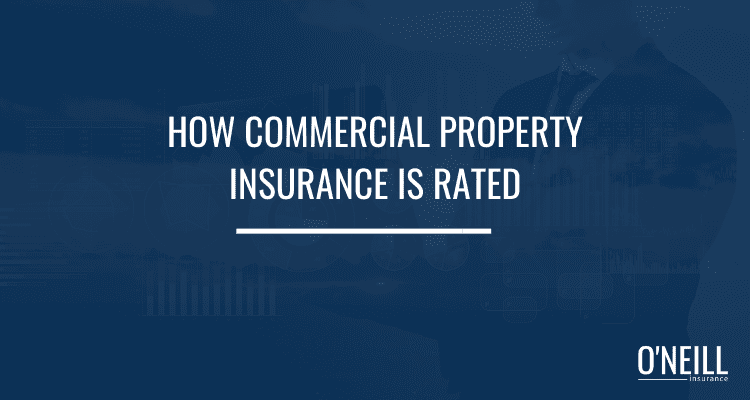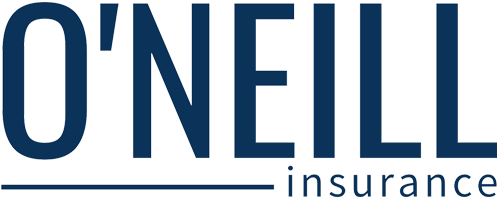
Commercial property insurance rating involves a number of factors, and can be complicated particularly for those with little to no knowledge of what goes into the underwriting process.
While the type of business you’re in, your location and the state of the insurance industry in general can all impact commercial property coverage pricing, there’s often more to it than that.
4 Key Components to Commercial Property Insurance Rating
When it comes to underwriting and rating commercial property insurance, insurers examine four key characteristics of a building:
- Construction
- Occupancy
- Protection
- Exposure
We refer to it as COPE.
Together, these factors can affect commercial property policy pricing – pricing that can fluctuate drastically following an Insurance Service Office (ISO) inspection.
This is especially true if there’s a discrepancy between what’s on an insurance application versus what’s found during an ISO inspection.
In this article, let’s examine each aspect of COPE and how it can affect your organization’s commercial property insurance rating and, subsequently, your insurance rates.
The Types of Commercial Property Insurance Rating
Before looking at the specific factors of COPE, it’s important to understand when it’s used and how underwriters rate property insurance in general.
When rating property insurance, insurers will generally use one of two methods: class rating or specific rating.
Class Rating vs. Specific Rating on Property Insurance for Your Business
Class Rating:
For the class rating method, buildings with similar characteristics are assigned to the same class. Insurance rates for class rating buildings will often be an average of all those in a particular group, with some rates fluctuating based on positive or negative features of a specific structure.
Typically, your building will be assigned a class rating if it has all of the following characteristics:
- It consists of 25,000 square feet or less
- It doesn’t contain a sprinkler system
- It is not fire-resistive
- It is not used for manufacturing
Specific rating:
In instances where a building doesn’t fall under the class rating method, a specific rating will be calculated based on individual characteristics of the structure itself.
This is where COPE comes in.
Specific ratings are used for more complex buildings and take into account unique features – features that are examined closely during an ISO inspection.
Following the inspection, ISO or the insurer will calculate a specific rate.
Construction
With a general understanding of the two rating systems, we can now examine how a building’s characteristics under COPE can affect policy pricing.
The first and most basic element of commercial property insurance rating is a building’s construction (i.e. materials the building is made of.)
Based on the ISO-developed system, insurers categorize buildings into one of six classes. These classes not only take into account the building materials used in construction (e.g., wood and concrete), but the combustibility of those materials as well.
These classes – numbered in order of combustibility, with Class 1 being the most likely to burn, are as follows:
- Class 1 (Frame): Buildings generally receive this classification if their exterior walls are made of wood or some other combustible material.
- Class 2 (Joisted Masonry): Buildings in this classification typically have noncombustible exterior walls consisting of concrete block, stone, brick adobe or another masonry material. In addition, Class 2 buildings usually have combustible floors and roofs.
- Class 3 (Noncombustible)—Class 3 buildings will have exterior walls, floors and roofs made of and supported by noncombustible or slow-burning materials. This can include materials like metal, asbestos or gypsum. Often, Class 3 buildings are equipped with steel frames.
- Class 4 (Masonry Noncombustible)—Class 4 buildings will often have exterior walls made of brick, concrete block or another type of masonry. Unlike Class 2 buildings, the floor and roof are constructed of metal or another noncombustible material.
- Class 5 (Modified Fire-resistive)—The walls, floor and roof of Class 5 buildings will have a fire rating of at least two hours. Because these buildings are heavily fire resistant, Class 5 buildings generally have walls, roofs and floors made of solid masonry that are at least 4 inches thick.
- Class 6 (Fire Resistive)—Similar to Class 5 buildings, the walls, floor and roof of Class 6 buildings will have a fire rating of at least two hours. In addition, the walls, floor and roof will consist of reinforced concrete and will be 4 inches thick or more. What’s more, structural steel used in Class 6 buildings will be load bearing and have a fire rating of at least two hours.
Following an ISO inspection, your building may be assigned a specific class, which could substantially impact your rates.
Occupancy
The second factor in COPE that insurers look at is occupancy. Specifically, underwriters will examine how a particular building is used (e.g., for retailing, manufacturing or renting).
In addition, underwriters are interested in the contents of a building and how those contents impact combustibility.
For example, if a building is used as a grain mill, it will likely contain dust that could ignite or explode. With this in mind, your commercial property insurance rates will vary depending on the type of work you perform in your building.
Protection
The third factor of COPE relates to protection and the methods used to safeguard a building from fire. When it comes to protection, insurers will take into account both public and private protection:
Public protection—In general, public protection is provided by local fire departments, and an ISO-developed system is used to rate the quality of that protection. Under this system, fire departments are assigned what’s called a Public Protection Class rating—numbered one to 10, with one being the best. Essentially, buildings located in communities with low Public Protection Class ratings will be charged a lower commercial property insurance rate. These ratings take into account:
- The caliber of the fire department
- The adequacy of the water supply
- The effectiveness of the fire alarm and communication system
Private protection—Private protection refers to the policyholder’s fire protection methods. This can include things like fire doors, fire alarms, fire extinguishers and sprinkler systems. Essentially, the more of these features your building has, the more likely your insurer will apply a credit to your insurance rate.
Exposure
The fourth and final factor of COPE refers to exposure. Exposure relates to external hazards that exist primarily due to a building’s location. This can include natural hazards (e.g., wind, hail and lightning) or man-made hazards from local infrastructure (e.g., highways) or the general public (e.g., high-crime areas).
The closer your building is to a natural or man-made hazard, the more likely you are to pay higher prices for commercial property insurance.
Conclusion
Commercial property insurance rates are anything but static, and a variety of outside factors can influence pricing.
Despite this, you aren’t alone when it comes to managing your risks and gaining insight into your unique policies.
If you need help with your business insurance and would like to speak to an advisor, fill out this brief form and one of our licensed advisors will be in contact with you.

